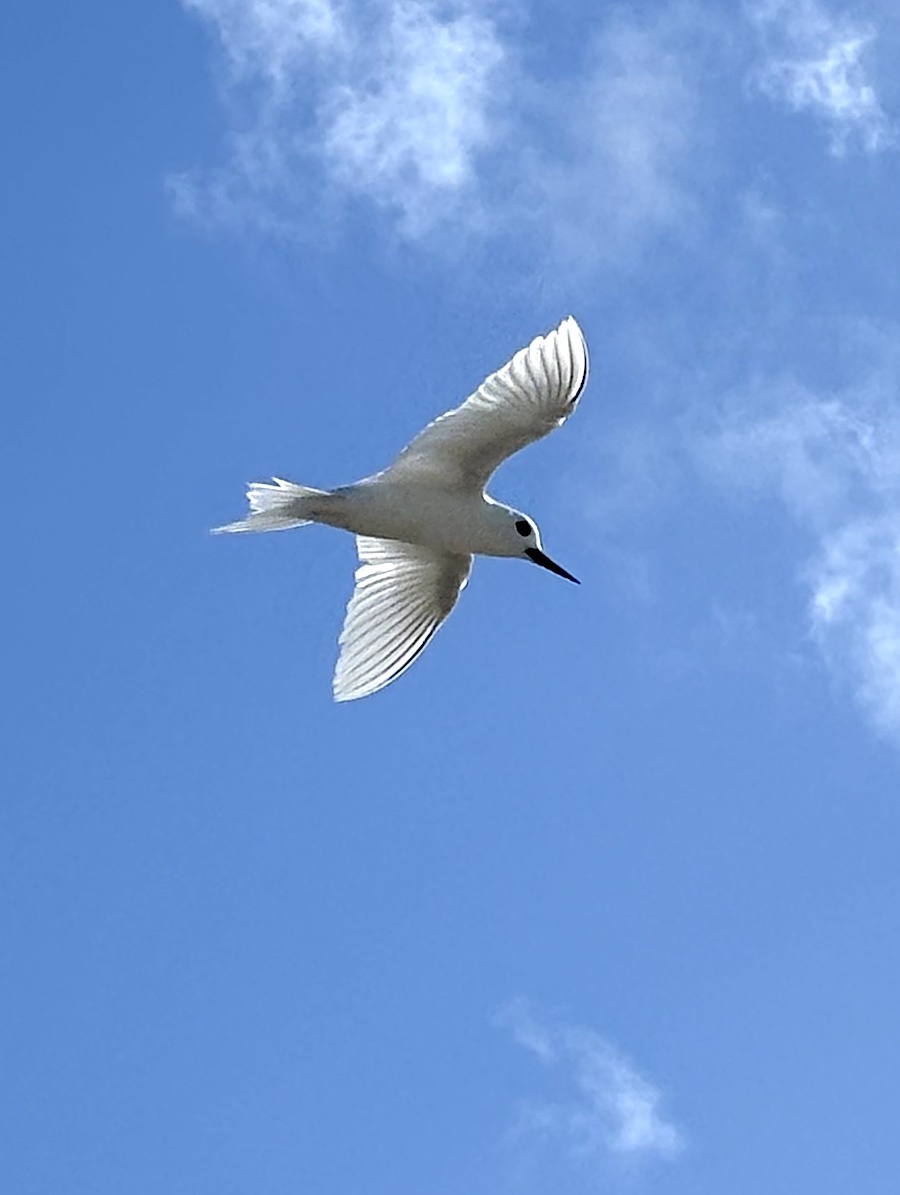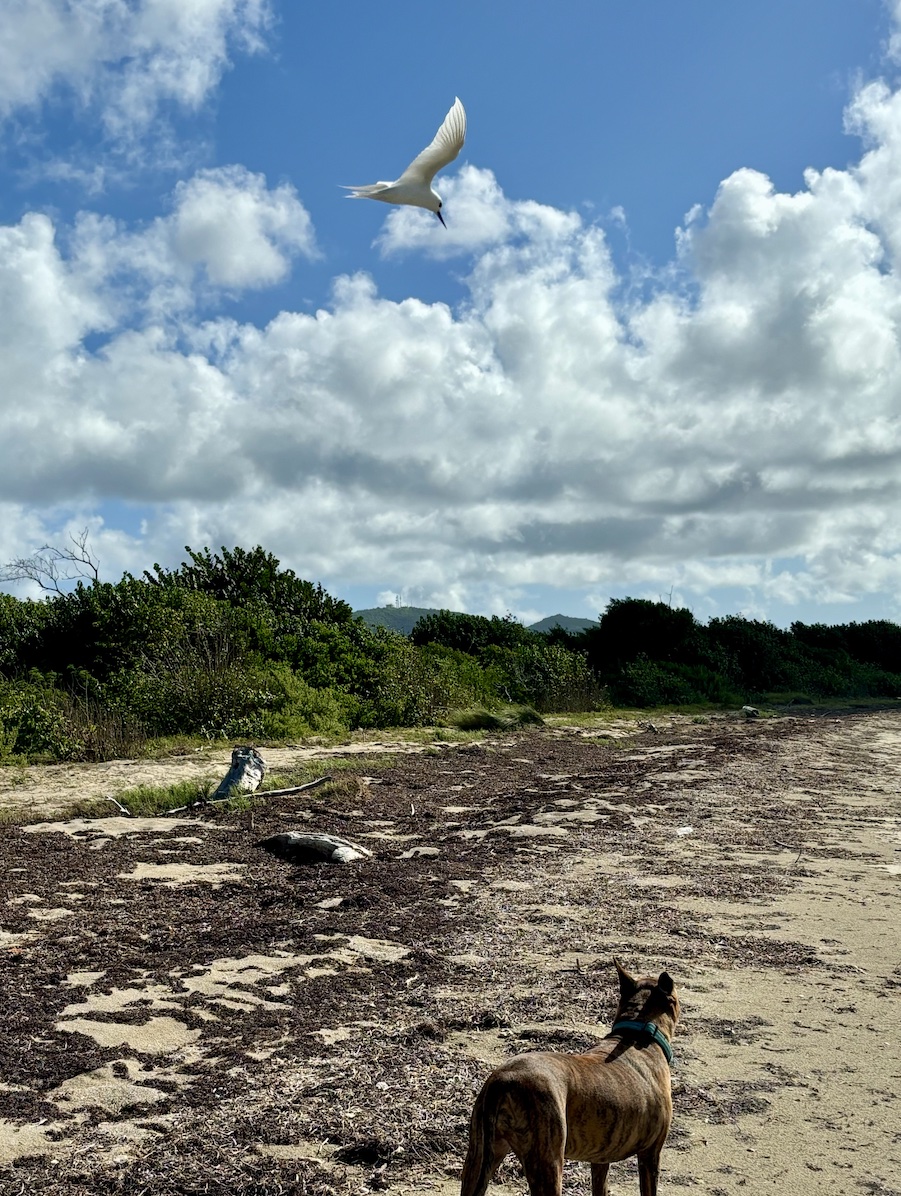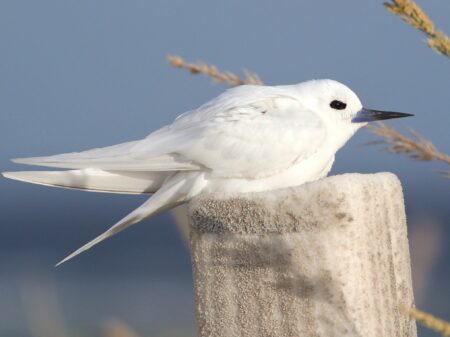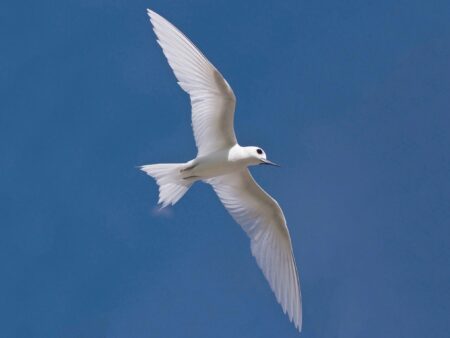Birders, brace yourselves for some exciting news! Jennifer Valiulis, Executive Director of the St. Croix Environmental Association (SEA), made an incredible discovery at St. Croix’s Sandy Point National Wildlife Refuge in St Croix, US Virgin Islands. She spotted a White Tern—only the second recorded sighting of this species in the West Indies!
A Serendipitous Discovery
On Sunday August 11th, Jennifer set out for a routine sea turtle track patrol along the southwest shore of St. Croix. She had just wrapped up a morning bird survey when something unusual caught her attention. Hovering above her dog, a completely white bird floated gracefully, following them along the beach. The bird’s shape suggested that it could be a tern, but this behavior was unlike anything Jennifer had seen before, especially compared to the Least Terns commonly found in the area—which typically fly with quick wingbeats and dive aggressively to defend their nests and chicks.
“I first assumed it was a Least Tern,” Jennifer recalls. “But as I looked closer, I realized the markings weren’t right.” The Least Tern is small, with a grayish back, yellow bill, white forehead, and black cap. This bird however was larger, entirely white, and had large striking black eyes. Jen’s keen observation skills and a bit of luck led her to take several photos with her phone, capturing this unique moment before she continued her turtle patrol.
Piecing Together the Mystery
Once home, Jennifer struggled to match her photos with any local bird species. Eventually, she shared her images in a U.S. Virgin Islands birding group chat, where her fellow birders, including BirdsCaribbean’s Executive Director and ornithologist, Lisa Sorenson, began to weigh in. After some research, Lisa suspected it was a White Tern, a bird typically found in the Pacific Ocean, especially around Hawaii and around several islands in the south Atlantic.
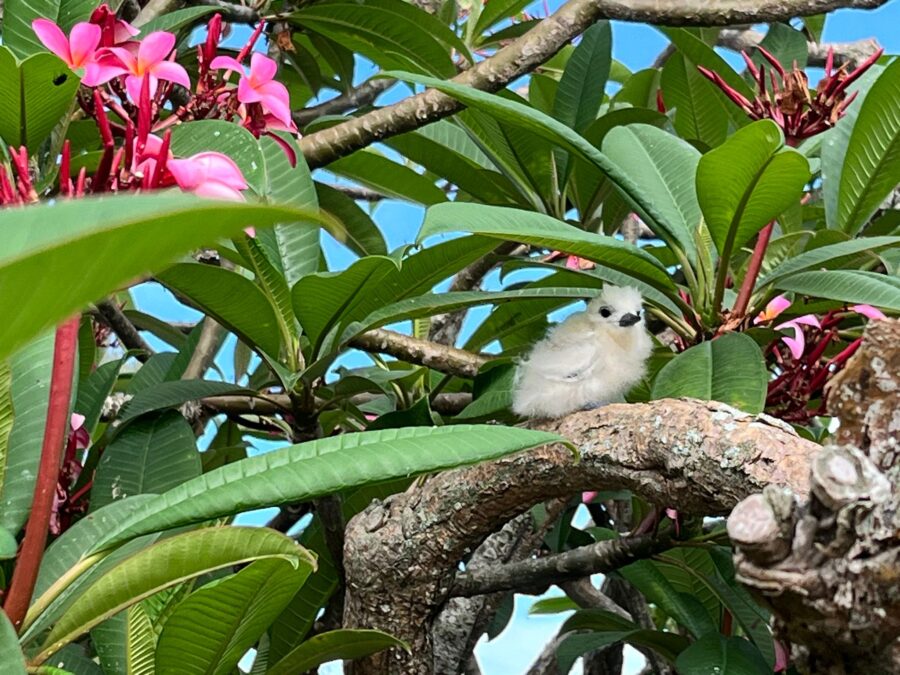
Caroline Pott, a former St. Croix resident now working as a Wildlife Biologist on Midway Island in the Pacific, confirmed the identification. “I live with White Terns—they’re everywhere here—on my windowsill, in the trees like Christmas decorations, on my shed roof,” Caroline said. “That is most definitely what it is. They love to follow, floating as you describe, like the birds in Cinderella.”
A Rare Visitor in a Safe Haven
This sighting marks only the second time a White Tern has been recorded in the West Indies, with the first being in San Salvador, The Bahamas, in June 2010. Jennifer’s discovery is a testament to the importance of wildlife refuges like Sandy Point, which provide a sanctuary for lost and exhausted birds that have strayed far from their normal habitats.
Jennifer reflected on the significance of refuges like Sandy Point, noting, “It’s a safe place for them to rest and refuel so they can hopefully find their way back to where they would normally be found. Although we have not seen anything quite so unusual at Sandy Point before, it is not uncommon to see tired, hungry birds that have strayed from their migratory routes.”
How did the White Tern end up in St Croix?
The White Tern (Gygis alba) is typically found in tropical and subtropical regions, with its normal range spanning the Pacific and Indian Oceans, including Hawaii, where it is commonly known as the “Fairy Tern,” and a handful of islands in the South Atlantic. The sighting in the US Virgin Islands is extraordinary because the species rarely strays to the North Atlantic.
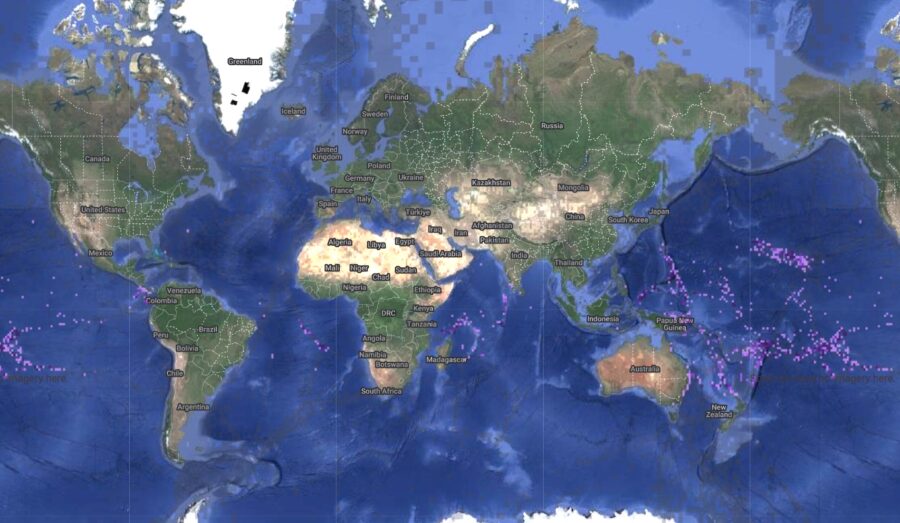
Seabird expert Rhiannon Austin, who studies seabirds in the Turks and Caicos Islands, commented, “This individual bird could have been blown off course during a storm or strong winds, a phenomenon known as “vagrancy,” where birds end up far outside their usual range.” She also explained that changes in weather patterns, possibly linked to climate change, can disrupt traditional migratory routes, movements, and food availability. These shifts can force birds to stray from their typical habitats as they search for suitable conditions. This makes the sighting both exciting and a poignant reminder of the broader environmental changes impacting wildlife globally.
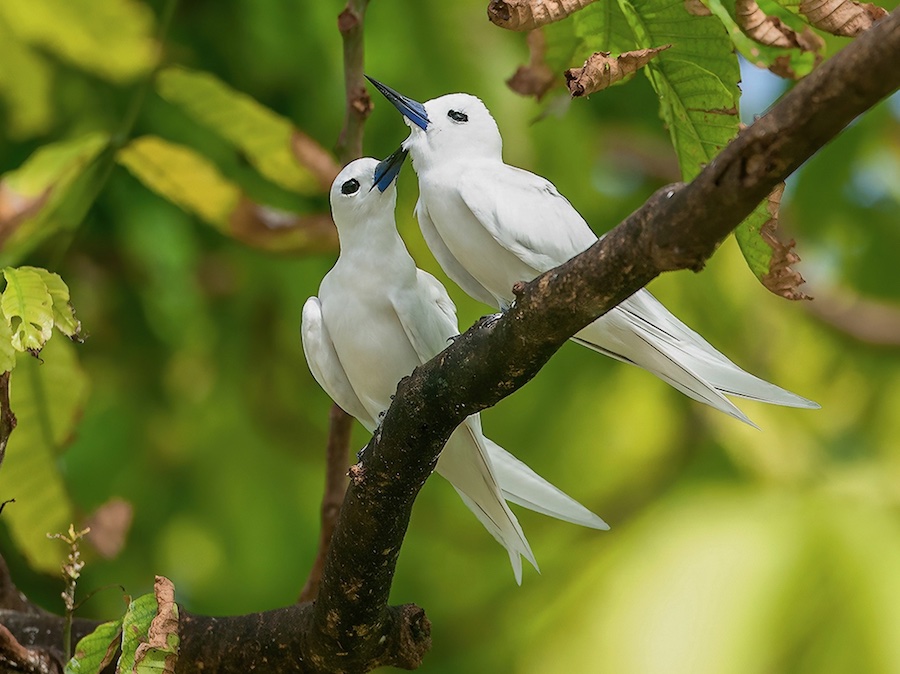
A Message to Fellow Birders
Jennifer’s experience serves as a reminder to all birders: trust your instincts and always document unusual sightings. “Even if it isn’t something very rare, the observation is still valuable,” she advises. She also emphasizes the importance of slowing down and taking in the natural world, rather than just focusing on data collection. “Once in a while, those cool anomalies turn out to be something really unusual and exciting—like a White Tern on St. Croix!”
This incredible sighting has not only thrilled the birding community but also highlights the critical role of conservation areas in protecting wildlife, even those far from home. Keep your eyes peeled—you never know when you might spot something truly extraordinary!
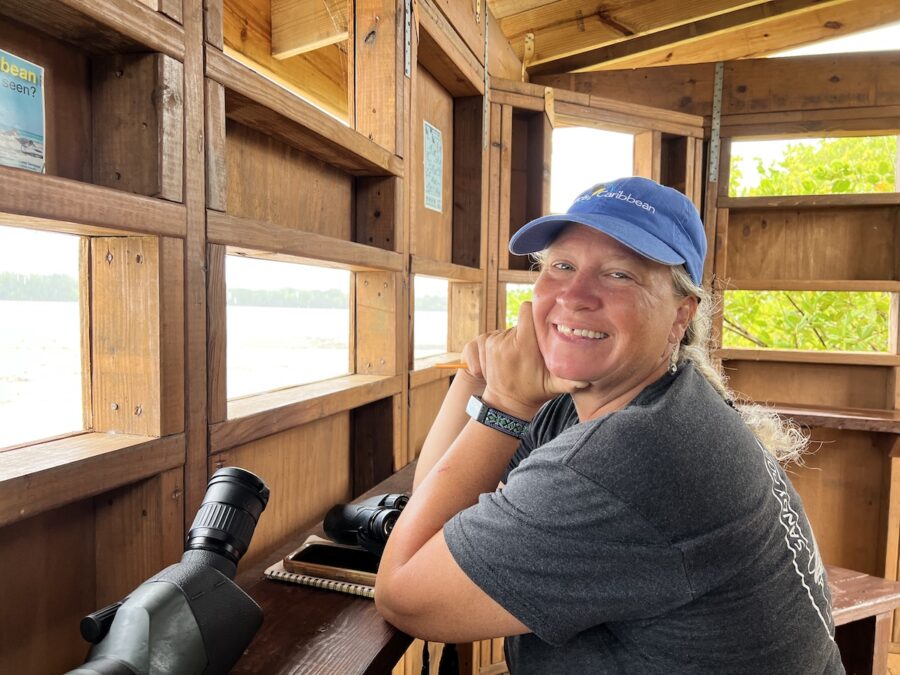
Editor’s Note: Jennifer returned to Sandy Point to try and spot the White Tern again, but with no luck. With Tropical Storm Ernesto bearing down on the US Virgin Islands, she had to shift her focus to hurricane preparedness. She and her fellow birding enthusiasts will continue to search for the White Tern, an exciting opportunity to add an extremely rare bird to their life lists. However, the recent storm may have carried the bird off to another island. West Indies birders: keep your eyes peeled for an all-white tern with a pointed black beak!

